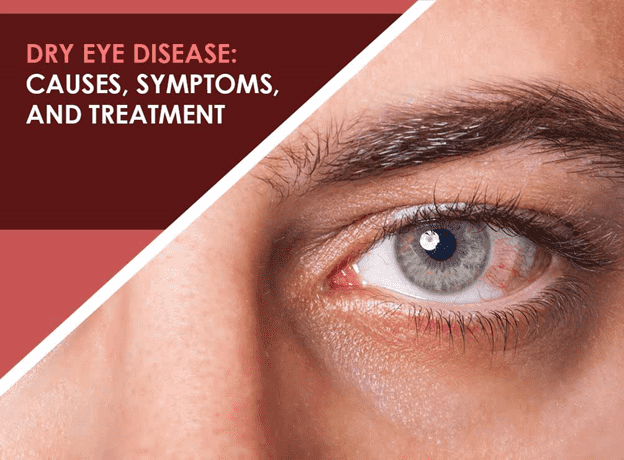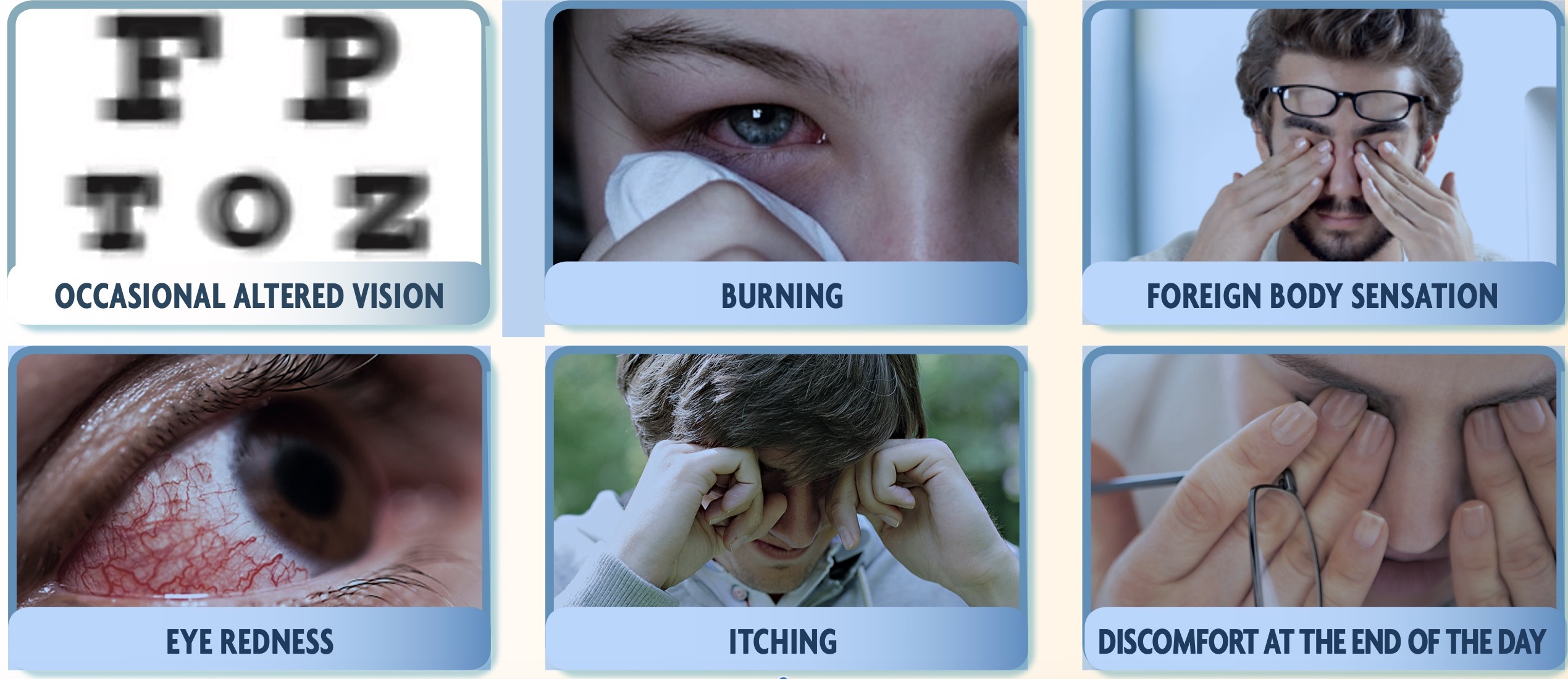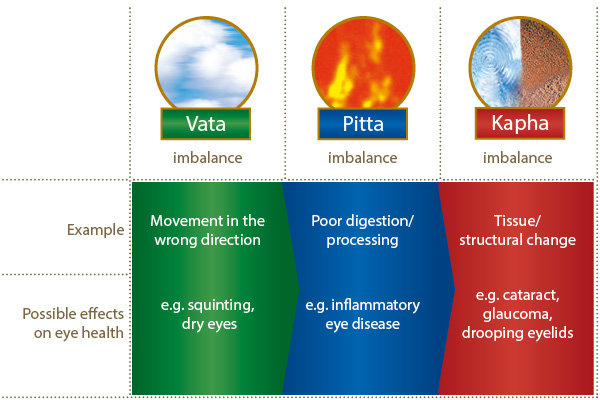 Are your eyes regularly itchy, dry, or red? These are common symptoms of dry eye syndrome also known as keratoconjunctivitis sicca (KCS), a condition that can easily be treated in Ayurveda to protect your vision.
Are your eyes regularly itchy, dry, or red? These are common symptoms of dry eye syndrome also known as keratoconjunctivitis sicca (KCS), a condition that can easily be treated in Ayurveda to protect your vision.
The continuous production and drainage of tears are important to the eyes' health. Tears keep the eye moist, help wounds heal, and protect against eye infections. In people with dry eyes, the eye produces fewer tears or tears of poor quality and is unable to keep its surface lubricated and comfortable.
The tear film consists of three layers-an outer, oily (lipid) layer that keeps tears from evaporating too quickly and helps tears remain on the eye; a middle (aqueous) layer that nourishes the cornea and conjunctiva; and a bottom (mucin) layer that helps to spread the aqueous layer across the eye to ensure that the eye remains wet. As we age, the eyes usually produce fewer tears. Also, in some cases, the lipid and mucin layers produced by the eye are of such poor quality that tears cannot remain in the eye long enough to keep the eye sufficiently lubricated.
Types of Dry Eye Syndrome:- Types of dry eye syndrome are related to the underlying problem that leads to dry eyes:
- Insufficient production of tears (also called keratoconjunctivitis sicca)
- Poor retention of tears
- Excessive evaporation of tears
Causes of Dry Eyes Syndrome:- There are many different factors that can contribute to dry eye, although a single identifiable cause can’t often be found. Below is a list of common causes:
- The environment: The sun, wind, and a dry climate can have a drying effect on your eyes. Your tears will evaporate quicker than they can be reproduced in these conditions and therefore leave you with dry eyes.
- Aging: As you age, the eye naturally produces fewer tears. The eyelids become less effective at spreading the tear film evenly across the eye, leaving dry patches.
- Contact lenses: Wearing your lenses for longer than suggested can cause your eyes to become dry and irritated. New materials tend to be more breathable, but you should always follow your wear schedule as advised by your optician.
- Pregnancy: During pregnancy, a woman’s hormone levels change frequently and as such, the body’s production of tears can be affected. This results in a reduction of moisture levels in the eye and dry patches to appear.
- Medical conditions: There are a number of medical conditions that affect the body’s production of tears, such as Sjogren's syndrome: a condition that can cause excessive dryness of the eyes, mouth, and other organs, and rheumatoid arthritis: a condition that causes pain, swelling and inflammation of the joints but also the glands around the eyes.
- Medicines: There are some medicines that can cause dry eye syndrome. Some diuretics, angiotensin-converting enzyme (ACE) inhibitors, antihistamines, decongestants, some sleeping pills, birth control pills, some antidepressants, some acne drugs specifically isotretinoin-type medication, morphine and other opiate-based painkillers
 Symptoms of Dry Eye Syndrome:- A patient with dry eye syndrome may experience a range of symptoms, including:
Symptoms of Dry Eye Syndrome:- A patient with dry eye syndrome may experience a range of symptoms, including:
- a stinging or burning sensation, and a feeling of dryness, grittiness, and soreness in the eyes
- a feeling like sand in the eye
- stringy mucus in or around the eyes
- eye sensitivity to smoke or wind
- redness of the eyes
- difficulty keeping the eyes open
- eye fatigue after reading, even for a short time
- blurred vision, especially towards the end of the day
- sensitivity to light
- discomfort when wearing contact lenses
- tearing
- double vision
- eyelids sticking together when waking up
Some people find the pain very strong, and this can lead to frustration, anxiety, and difficulty functioning in daily life. Complications may include a worsening of eye redness and light sensitivity, increasing painful eyes, and deterioration of eyesight.

Ayurvedic view and Ayurvedic Herbal treatment:-
According to the Ayurvedic point of view, Dry Eye Syndrome is related to a condition called Shushk-akshipaka. Vata & Pitta/Rakta vitiation as per Ayurvedic viewpoint are the major contributing pathological factors in its manifestation. Contrary to the available modern medical treatment/management regimen; Ayurveda propounds a systematic/ holistic treatment approach in the treatment of dry eye syndrome.
Pathophysiology of Dry Eye Syndrome according to Ayurveda:-
Ayurveda denotes all part of the body is made up of panchmahabhoot and tridosh principles. Eye is the seat of Pitta dosa and Agni mahabhoot while other mahabhoot and dosa are less. Anywhere in the body dryness (rukshta) is due to vitiation of vata dosa. Usna guna of pitta produces dryness in the eyes so involvement of vata and pitta both in dry eye. When ruksha and khar guna of vata are aggrevated along with usna guna of pitta dosa produces roughness foreign body sensation and a burning sensation in the eyes, called Shushkakshipaka disease.
Dusya—Ras dhadu and rakt dhatu
Srotas----Rasvah, asruvah, and raktvah
Type of dusti--- Kshaya and srotavrodha

Line of Treatment according to Ayurveda:-
It would comprise of one or more of the following;
- Prescription for Ayurvedic herbs
- Ayurvedic therapy sessions
- Counseling & stress management
- Advice on diet & lifestyle modifications
- An Ayurvedic procedure known as ‘Akshi-Tarpan’ gives miraculous relief from dry eyes, it not only reduces irritation burning, and scratching sensation, but also imparts nourishment to the eyes.
Ayurveda has been used for centuries to manage various eye problems, including cataracts, glaucoma, dry eye syndrome, and macular degeneration through Ayurvedic Medicines and Ayurvedic Surgeries inthe Indian continent. Ayurvedic medicines have long been used to strengthen and improve eyesight. Ayurveda provides a number of methods to manage dry eyes at the earliest. Ayurvedic eye care is fulfilling and rejuvenates and nourishes the eyes to the core. For expert Ayurvedic doctors' opinions, contact Life Line Ayurvedic Herbal Clinic as soon as possible and manage your Dry Eye Syndrome. CONTACT
/can-andrographis-boost-immune-function-89538-primary-recirc-871902d4a57545399566fb55be3681de.jpg)




/can-andrographis-boost-immune-function-89538-primary-recirc-871902d4a57545399566fb55be3681de.jpg)


